Vaishno Devi Temple – Katra, Jammu and Kashmir
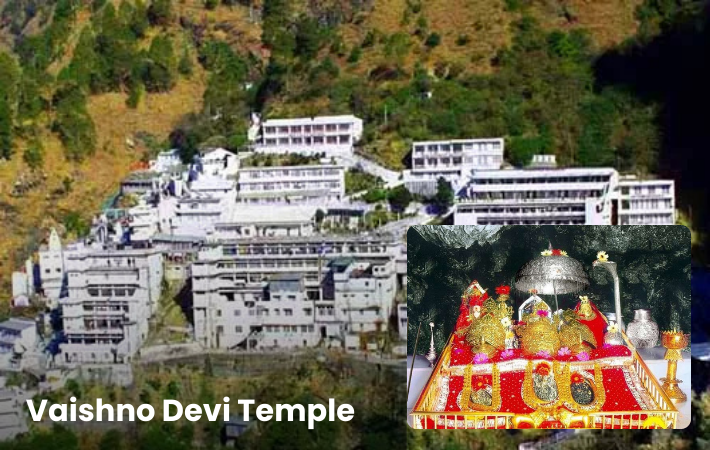
Location: Trikuta Hills, near Katra town, Reasi district, Jammu and Kashmir
Altitude: 5,200 feet above sea level
Deity: Vaishno Devi (a manifestation of Goddess Durga)
Importance:
Vaishno Devi Temple is one of the most revered pilgrimage sites in India, located in the union territory of Jammu and Kashmir. It is believed that the Goddess Vaishno Devi resides in a natural cave shrine in the form of three rock formations known as Pindis. Devotees undertake a 13-kilometer trek from Katra to reach the shrine. Over one crore pilgrims visit this temple annually, making it one of the most visited spiritual destinations in Jammu and Kashmir.
Special Fact:
The pilgrimage is considered incomplete without visiting the Bhairavnath Temple, situated 2 kilometers uphill from the main shrine.
Amarnath Cave Temple – Pahalgam, Jammu and Kashmir
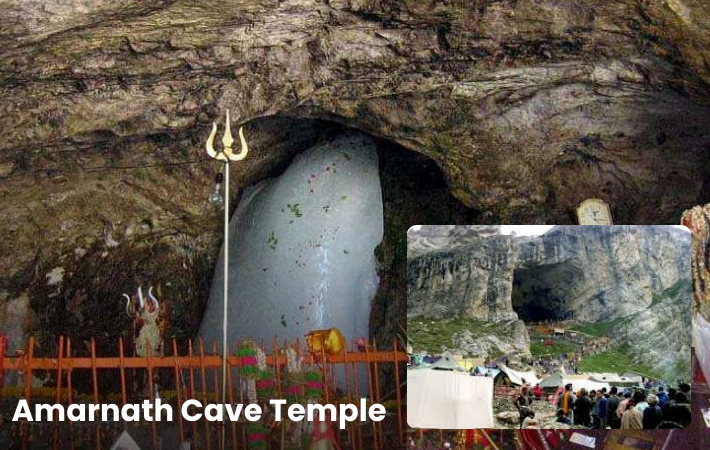
Location: Amarnath Cave, Lidder Valley, Anantnag District, Jammu and Kashmir
Altitude: 12,756 feet
Deity: Lord Shiva
Importance:
Amarnath Temple in Jammu and Kashmir is renowned for its naturally occurring ice Shivling, which forms during the summer months due to the freezing of water droplets inside the cave. The temple holds immense significance among Shiva devotees. According to legend, Lord Shiva revealed the secret of immortality to Goddess Parvati in this very cave. The annual Amarnath Yatra attracts thousands of pilgrims from across the country.
Special Fact:
It is believed that visiting Amarnath Temple grants liberation (moksha) and cleanses one’s sins.
Raghunath Temple – Jammu City, Jammu and Kashmir
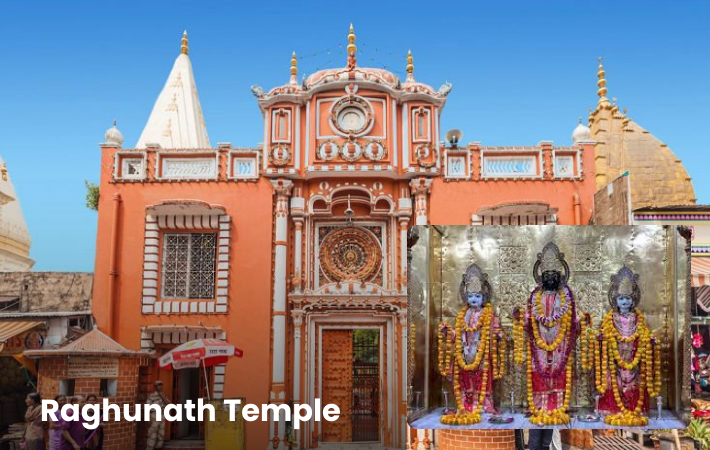
Location: Jammu City, Jammu and Kashmir
Deity: Lord Rama
Importance:
Raghunath Temple is one of the largest temple complexes in North India, situated in the heart of Jammu City. Built by Maharaja Gulab Singh and completed by his son Maharaja Ranbir Singh in 1860, the complex comprises seven shrines dedicated to various deities. This temple is a major spiritual center in Jammu and Kashmir, particularly for devotees of Lord Rama.
Special Fact:
The temple houses a vast collection of Hindu scriptures in Sanskrit, Hindi, and other Indian languages.
Shankaracharya Temple – Srinagar, Jammu and Kashmir
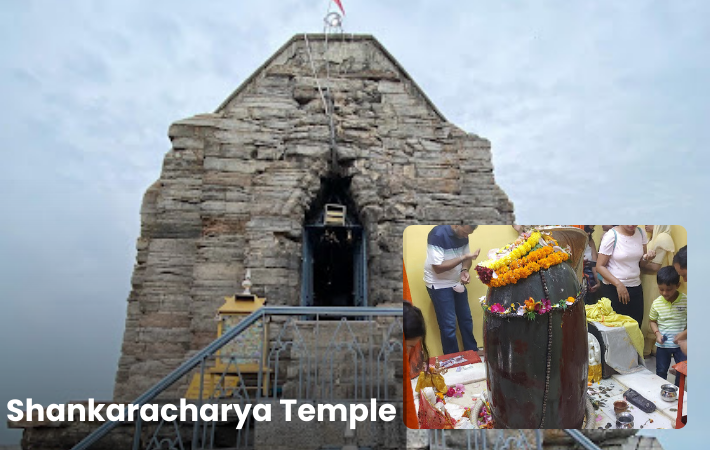
Location: Shankaracharya Hill, Srinagar, Jammu and Kashmir
Altitude: 1,100 feet above Srinagar
Deity: Lord Shiva
Importance:
Located atop a hill overlooking Srinagar and Dal Lake, the Shankaracharya Temple is dedicated to Lord Shiva. It is believed that the great philosopher Adi Shankaracharya visited and meditated here. The temple is not only a major spiritual site but also a historic monument, attracting pilgrims and tourists alike. It is one of the oldest temples in Jammu and Kashmir, dating back to the 9th century.
Special Fact:
The temple is sacred to both Hindus and Buddhists and is mentioned in several ancient scriptures.
Kheer Bhawani Temple – Ganderbal, Jammu and Kashmir
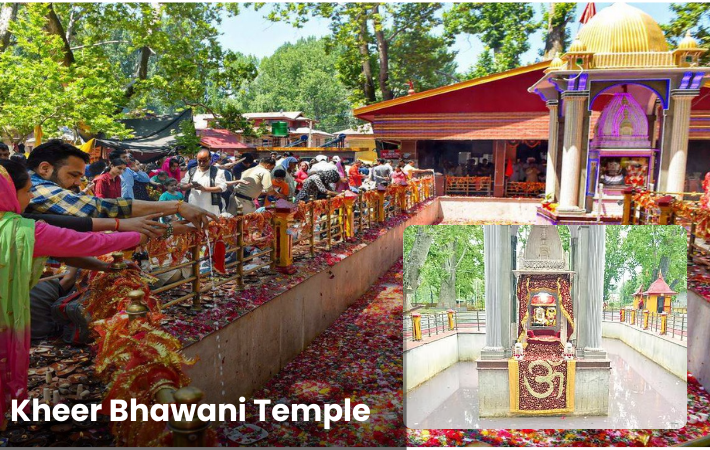
Location: Tulmulla village, Ganderbal district, near Srinagar, Jammu and Kashmir
Deity: Goddess Ragnya Devi (an incarnation of Durga)
Importance:
Kheer Bhawani Temple is built over a sacred spring and holds deep spiritual value for the Kashmiri Pandit community. Located in Jammu and Kashmir, devotees offer kheer (sweet rice pudding) to the Goddess, which gives the temple its name. The spring water is known to change color, which is interpreted as a divine message or warning.
Special Fact:
A change in the color of the spring water, especially to black, is believed to signify forthcoming trouble or unrest.
FAQ – Temples of Jammu and Kashmir
Q1: What is the best time to visit temples in Jammu and Kashmir?
A: The best time to visit temples in Jammu and Kashmir is from March to October, as the weather is pleasant and most pilgrimage routes are accessible. The Amarnath Yatra takes place only during the Shravan month (July-August).
Q2: Is there any dress code for visiting these temples?
A: While there is no strict dress code, visitors are advised to wear modest and traditional clothing out of respect for religious sentiments. Some temples may require head covering, especially for women.
Q3: How can I reach Vaishno Devi Temple from Jammu?
A: From Jammu, you can reach Katra by train, bus, or taxi. From Katra, a 13 km trek (or pony/helicopter services) leads to the Vaishno Devi Temple.
Q4: Is the Amarnath Temple accessible throughout the year?
A: No, the Amarnath Cave Temple is open only during a specific period in summer (June to August) due to extreme weather and high-altitude location.
Q5: Are these temples safe for solo travelers and families?
A: Yes, all major temples in Jammu and Kashmir are generally safe and well-guarded. However, it is advised to stay updated on local travel advisories, especially when planning to visit high-altitude or remote locations.
Q6: Can non-Hindus visit these temples in Jammu and Kashmir?
A: Yes, most temples in Jammu and Kashmir welcome non-Hindu visitors, provided they respect the religious customs and follow the rules of the temple premises.



